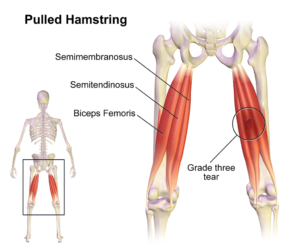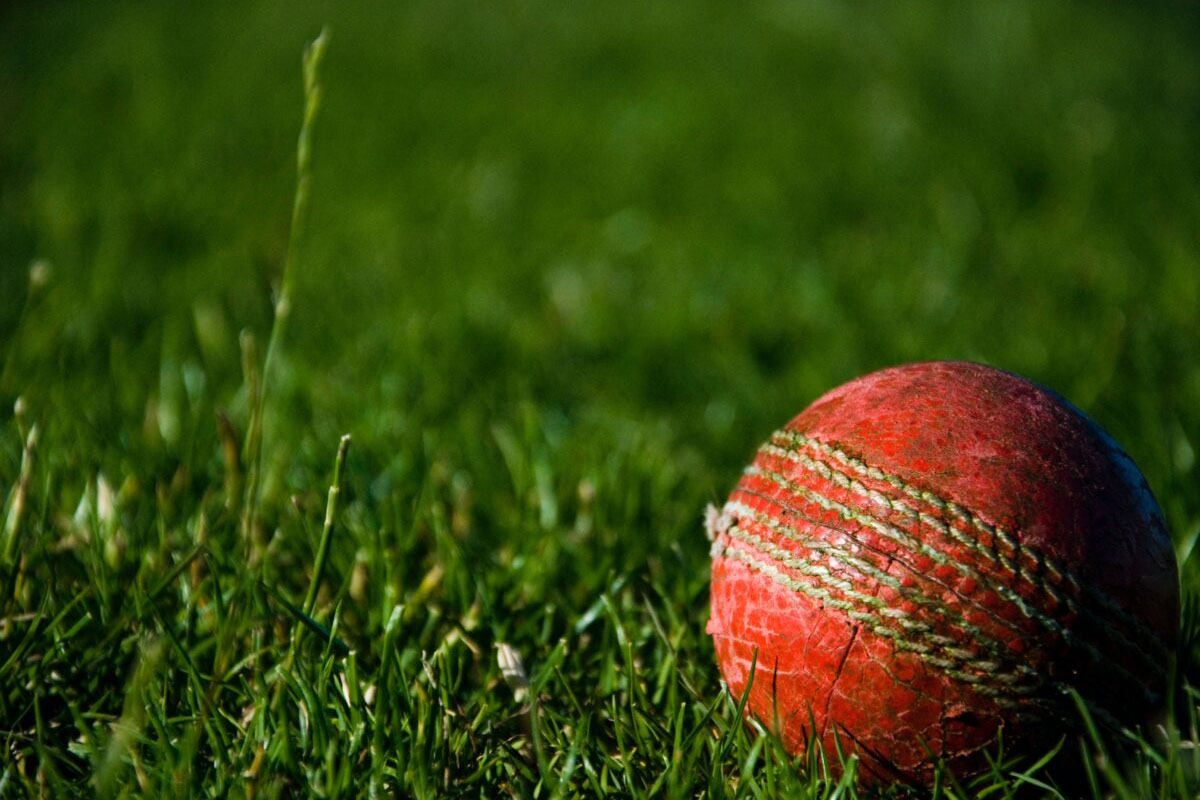It’s that time of year. The season has started. We’ve watched the rain come down for the first few weeks and we’re about to get going. “10 overs flat out from the bottom end please bowler”. Hamstring tears in cricket are an issue, and we see plenty of patients who’ve suffered them.
What are the hamstrings and their role in cricket?
The hamstrings are 3 muscles at the back of your thigh which control some hip and knee movements, predominantly hip extension and knee flexion. The hamstring muscles are: semitendinosus, semimembranosus and biceps femoris.
The hamstrings are important in running, including deceleration and changes of direction. This means these muscles are used in all 3 domains in cricket, for example decelerating after making a run when batting or going to field a ball.
How can you tear hamstrings?
Hamstring tears account for 15% of all cricketing injuries, occurring during sprinting. When sprinting, the leg extends forwards and the foot prepares to hit the ground (heel strike), during which the hamstring is lengthening (contracting eccentrically) to slow the body down.

Grade of Muscle Tears
Muscle strains are categorised into 3 groups, corresponding to the amount of pain, weakness and loss of movement.
Grade 1 (mild) – a few muscle fibres are torn. You may have a sudden onset of pain at the back of your thigh but your gait should be normal. Muscle strength and range of movement (knee flexion) are not often affected, although there may be some localised swelling.
Grade 2 (partial/ moderate) – approximately half of the muscle fibres are torn. You will have a sudden onset of pain and swelling at the back of your thigh. Your gait may be affected and there may be some loss of range of movement. There would be a reproduction of symptoms with pressure on the injured hamstring and knee flexion against resistance.
Grade 3 (complete/ severe) – ranging from half of the muscle fibres being torn to a complete rupture of the hamstring. Most complain of a “popping” sensation where there will be a sudden sharp pain at the back of the thigh. There will be bruising and swelling at the back of the thigh. As the hamstring will show great weakness, gait will not be normal, with most being unable to weight bear on the affected side.
Hamstring Tear Risk Factors and Prevention
Hamstring tears can be caused by the following reason:
- Imbalance in muscle strength
- Muscle fatigue
- Hamstring tightness
- Insufficient warm-up
- Previous hamstring injuries
- Muscle imbalance between hamstrings and quadriceps, and asymmetries in strength from your left hamstring to your right, or from one hamstring muscle to another can leave your hamstrings susceptible to injury. You should build hamstring strength throughout their length, so when they are lengthening (like running in to bowl) they have the capacity to cope with the load you are placing them under.
- Fatigue can be normal after a match or training session, but may also build up throughout the season. As cricketers, we generally go from a few months of rest during the winter to training and matches every week in the summer, and therefore we can be prone to fatigue in the summer season. (See my 1st article for the Importance of Pre-Season Training which will help prevent summer fatigue). Simple recovery techniques can be used during the summer season like: good nutrition, quality sleep and sufficient rest between training sessions and matches.
- Hamstrings can become injured if they are tight (although this topic is often debated) as you will lack the flexibility to reach and stop the ball going for 4 in the field, hence it is important to get into a good stretching regime. Below are some hamstring stretches to use in your routine.
- Before training or a match, you must warm up to prepare your body for the demands you are placing it under. Warm-ups have lots of effects on the whole body, including increasing blood flow to the muscles through a process called vasodilation. Your warm-up should start with a gentle jog or cycle, then into dynamic stretches, and then a cricket-specific drill.
- There is a very strong association between previous hamstring tears and a risk of re-injury, where cricketers were 2 to 6 times more likely to suffer with a re-injury, with the highest risk being in the first 8 weeks returning to cricket. This can be due to the formation of scar tissue, incomplete healing and ongoing muscle weakness. Guiding you through a gradual hamstring loading programme and phased return to cricket will greatly reduce your risk of re-injury.
If you do sustain a cricket, hamstring, or any other sporting injury, it is our aim to get you back competing as soon as possible. At Head2Toe Physio, we can assess and help you manage your sporting injury. We’ll help guide you through a progressive program to get you back onto the field.
All our Physiotherapists are highly qualified, experienced, with a variety of post graduate specialisations. If you or anyone you know, would like to have a physiotherapy assessment with the team at Dorking , Leatherhead or Crawley , book online here or contact us here.
Blog post guest written by Evie Spreadbury, Physiotherapist, Dorking, & Leatherhead Clinics.

References:
7 steps to preventing hamstring injury (2020) Blackberry Clinic. Available at: https://www.blackberryclinic.co.uk/articles/7-steps-to-preventing-hamstring-injury/ (Accessed: March 15, 2023).
Chumanov, E.S., Heiderscheit, B.C. and Thelen, D.G. (2007) “The effect of speed and influence of individual muscles on hamstring mechanics during the swing phase of sprinting,” Journal of Biomechanics, 40(16), pp. 3555–3562. Available at: https://doi.org/10.1016/j.jbiomech.2007.05.026.
Injury prevention (the warm up and cool down) (2022) Good Health Centre. Available at: https://goodhealthcentre.co.uk/injury-prevention-warm-cool/ (Accessed: March 15, 2023).
Latest issue (no date) Aspetar Sports Medicine Journal – Risk factors for hamstring injuries: A current view of the literature. Available at: https://www.aspetar.com/journal/viewarticle.aspx?id=43#.ZBH4CZHP25c (Accessed: March 15, 2023).
Linklater, J. et al. (2010) “Hamstring injuries: Anatomy, imaging, and intervention,” Seminars in Musculoskeletal Radiology, 14(02), pp. 131–161. Available at: https://doi.org/10.1055/s-0030-1253157.
Pardiwala, D.N., Rao, N.N. and Varshney, A.V. (2017) “Injuries in cricket,” Sports Health: A Multidisciplinary Approach, 10(3), pp. 217–222. Available at: https://doi.org/10.1177/1941738117732318.
Petersen, J. (2005) “Evidence based prevention of hamstring injuries in Sport,” British Journal of Sports Medicine, 39(6), pp. 319–323. Available at: https://doi.org/10.1136/bjsm.2005.018549.
THELEN, D.A.R.R.Y.L.G. et al. (2005) “Simulation of biceps femoris Musculotendon mechanics during the swing phase of sprinting,” Medicine & Science in Sports & Exercise, 37(11), pp. 1931–1938. Available at: https://doi.org/10.1249/01.mss.0000176674.42929.de.





